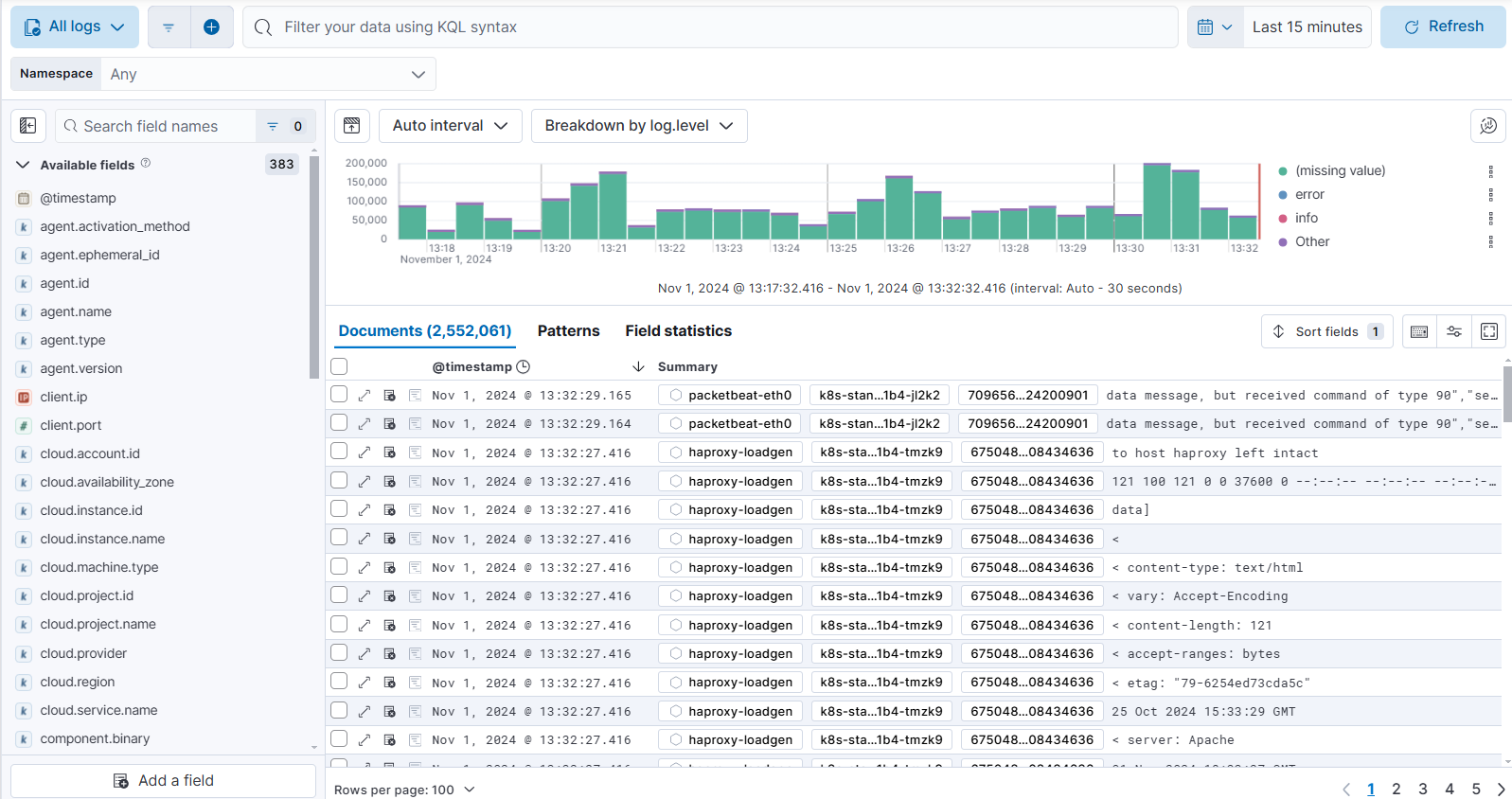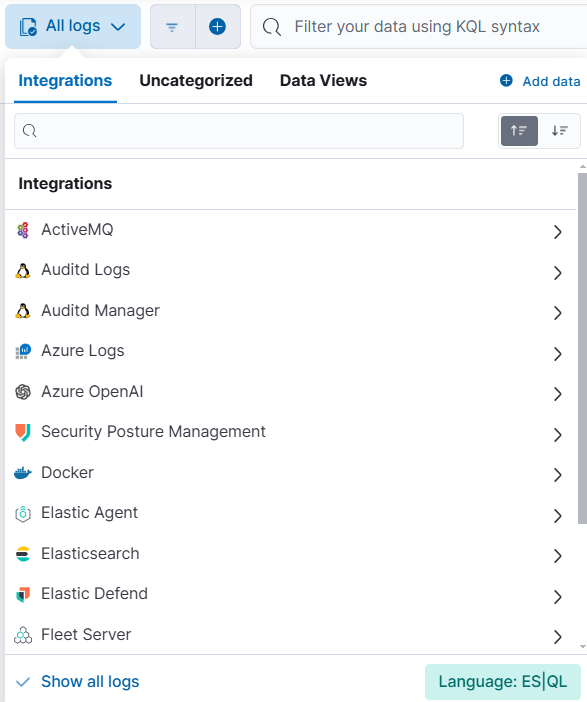- Elastic Cloud Serverless
- Elasticsearch
- Elastic Observability
- Get started
- Observability overview
- Elastic Observability Serverless billing dimensions
- Create an Observability project
- Quickstart: Monitor hosts with Elastic Agent
- Quickstart: Monitor your Kubernetes cluster with Elastic Agent
- Quickstart: Monitor hosts with OpenTelemetry
- Quickstart: Unified Kubernetes Observability with Elastic Distributions of OpenTelemetry (EDOT)
- Quickstart: Collect data with AWS Firehose
- Get started with dashboards
- Applications and services
- Application performance monitoring (APM)
- Get started with traces and APM
- Learn about data types
- Collect application data
- View and analyze data
- Act on data
- Use APM securely
- Reduce storage
- Managed intake service event API
- Troubleshooting
- Synthetic monitoring
- Get started
- Scripting browser monitors
- Configure lightweight monitors
- Manage monitors
- Work with params and secrets
- Analyze monitor data
- Monitor resources on private networks
- Use the CLI
- Configure a Synthetics project
- Multifactor Authentication for browser monitors
- Configure Synthetics settings
- Grant users access to secured resources
- Manage data retention
- Scale and architect a deployment
- Synthetics Encryption and Security
- Troubleshooting
- Application performance monitoring (APM)
- Infrastructure and hosts
- Logs
- Inventory
- Incident management
- Data set quality
- Observability AI Assistant
- Machine learning
- Reference
- Get started
- Elastic Security
- Elastic Security overview
- Security billing dimensions
- Create a Security project
- Elastic Security requirements
- Elastic Security UI
- AI for Security
- Ingest data
- Configure endpoint protection with Elastic Defend
- Manage Elastic Defend
- Endpoints
- Policies
- Trusted applications
- Event filters
- Host isolation exceptions
- Blocklist
- Optimize Elastic Defend
- Event capture and Elastic Defend
- Endpoint protection rules
- Identify antivirus software on your hosts
- Allowlist Elastic Endpoint in third-party antivirus apps
- Elastic Endpoint self-protection features
- Elastic Endpoint command reference
- Endpoint response actions
- Cloud Security
- Explore your data
- Dashboards
- Detection engine overview
- Rules
- Alerts
- Advanced Entity Analytics
- Investigation tools
- Asset management
- Manage settings
- Troubleshooting
- Manage your project
- Changelog
Explore logs
editExplore logs
editWith Logs Explorer, based on Discover, you can quickly search and filter your log data, get information about the structure of log fields, and display your findings in a visualization. You can also customize and save your searches and place them on a dashboard. Instead of having to log into different servers, change directories, and view individual files, all your logs are available in a single view.
Go to Logs Explorer by opening Discover from the navigation menu, and selecting the Logs Explorer tab.

Required Kibana privileges
editViewing data in Logs Explorer requires read privileges for Discover and Integrations.
For more on assigning Kibana privileges, refer to the Kibana privileges docs.
Find your logs
editBy default, Logs Explorer shows all of your logs according to the index patterns set in the logs source advanced setting. Update this setting by going to Management → Advanced Settings and searching for logs source.
If you need to focus on logs from a specific integrations, select the integration from the logs menu:

Once you have the logs you want to focus on displayed, you can drill down further to find the information you need. For more on filtering your data in Logs Explorer, refer to Filter logs in Logs Explorer.
Review log data in the documents table
editThe documents table in Logs Explorer functions similarly to the table in Discover. You can add fields, order table columns, sort fields, and update the row height in the same way you would in Discover.
Refer to the Discover documentation for more information on updating the table.
Actions column
editThe actions column provides access to additional information about your logs.
Expand: () Open the log details to get an in-depth look at an individual log file.
Degraded document indicator: () Shows if any of the document’s fields were ignored when it was indexed.
Ignored fields could indicate malformed fields or other issues with your document. Use this information to investigate and determine why fields are being ignored.
Stacktrace indicator: () Shows if the document contains stack traces.
This indicator makes it easier to navigate through your documents and know if they contain additional information in the form of stack traces.
View log details
editClick the expand icon () in the Actions column to get an in-depth look at an individual log file.
These details provide immediate feedback and context for what’s happening and where it’s happening for each log. From here, you can quickly debug errors and investigate the services where errors have occurred.
The following actions help you filter and focus on specific fields in the log details:
-
Filter for value (
): Show logs that contain the specific field value.
-
Filter out value (
): Show logs that do not contain the specific field value.
-
Filter for field present (
): Show logs that contain the specific field.
-
Toggle column in table (
): Add or remove a column for the field to the main Logs Explorer table.
View log quality issues
editFrom the log details of a document with ignored fields, as shown by the degraded document indicator , expand the Quality issues section to see the name and value of the fields that were ignored.
Select Data set details to open the Data Set Quality page. Here you can monitor your data sets and investigate any issues.
The Data Set Details page is also accessible from Project settings → Management → Data Set Quality. Refer to Monitor data sets for more information.
On this page